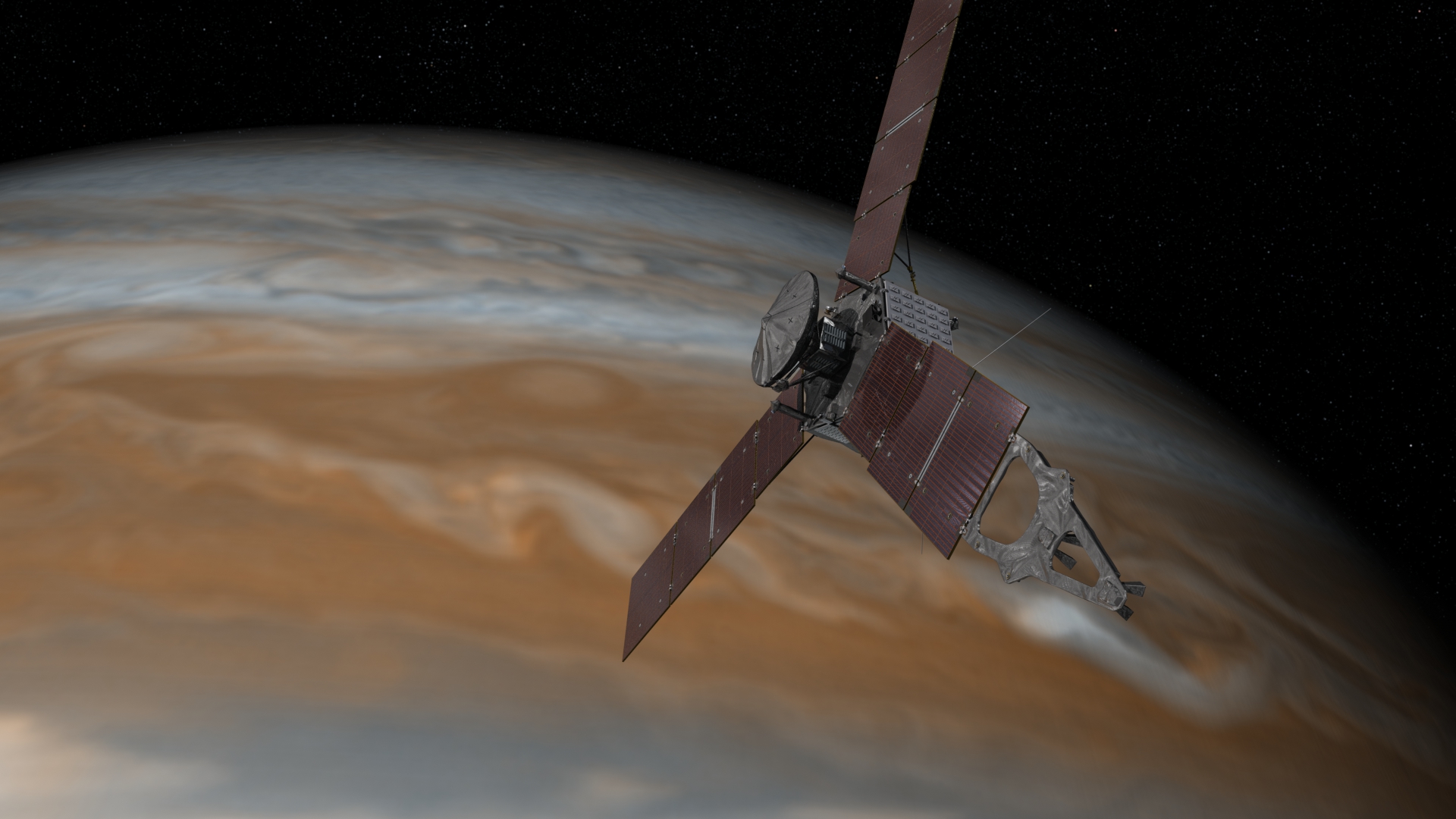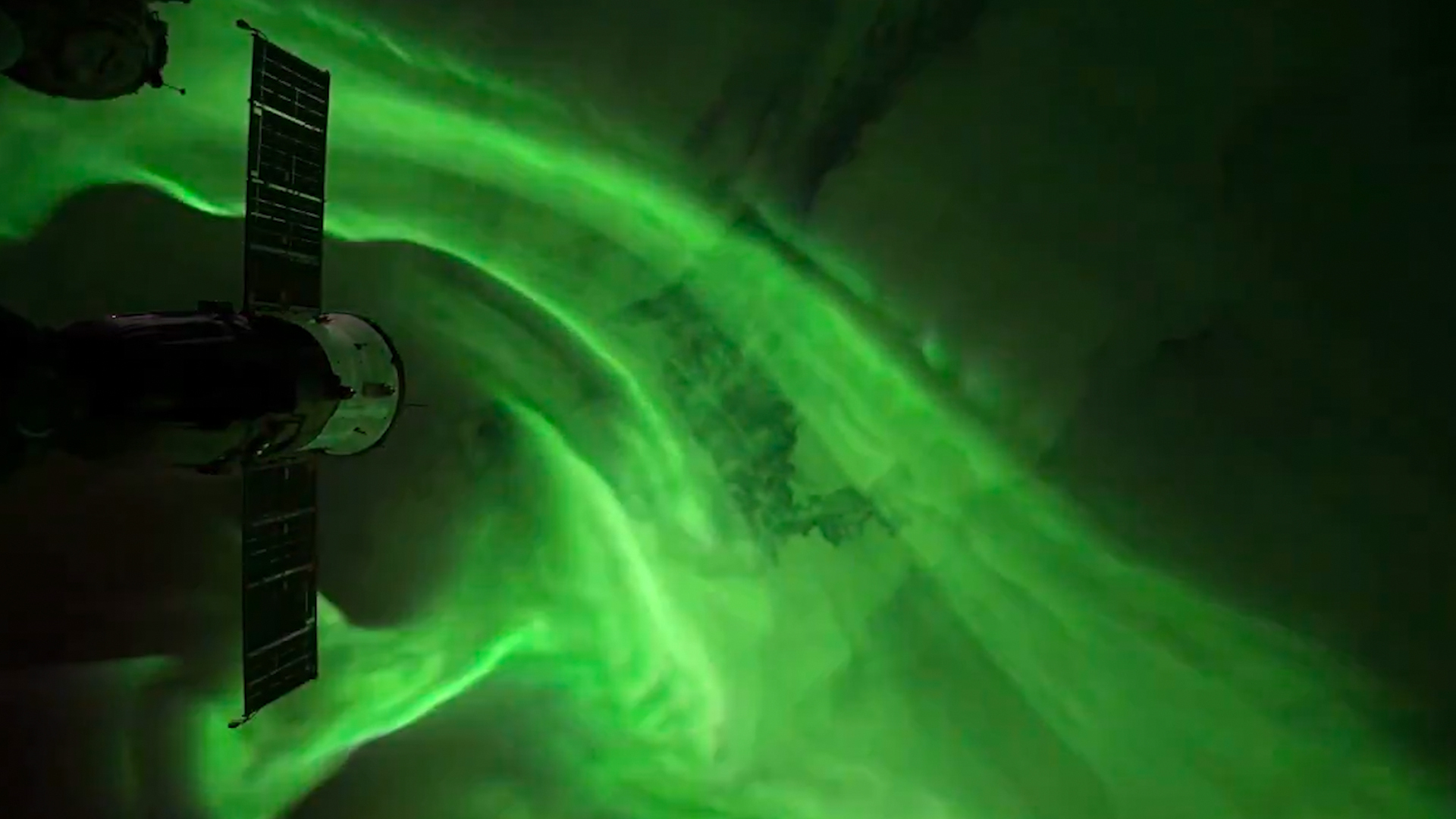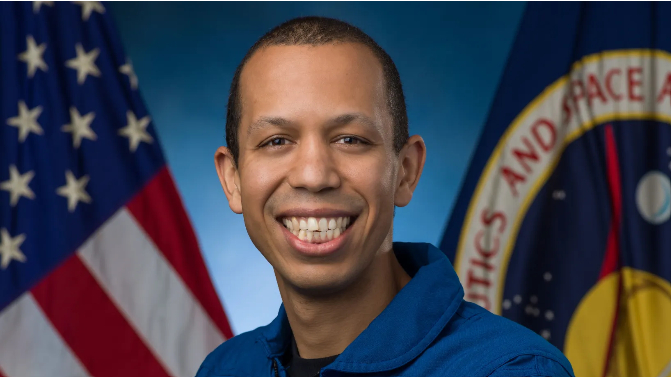Astronomers urged to fight 'tooth and nail' to protect dark skies
'If not stopped, this craziness will become worse and worse.'

Less than a month after astronomers found satellite trails scarring many images snapped by the Hubble Space Telescope, a new paper is urging scientists to "fight tooth and nail" to protect the night sky against rising light pollution.
"We are very pessimistic about the path being followed by an important part of the scientific community (and other actors) that works on and has responsibilities for these areas of research," the authors wrote in the paper, which was published Monday (March 20) in the journal Nature Astronomy.
The new paper, a comment article, argues that current efforts by astronomers are mitigating the problem of light pollution in astronomy but will not solve it unless strict and immediate regulations are enforced.
Related: Challenge for astronomy: Megaconstellations becoming the new light pollution
Light pollution caused by artificial urban lighting on Earth, as well as satellites congesting low Earth orbit, has been hampering astronomical observations since at least 1957. For over six decades, astronomers have repeatedly voiced concerns that the observations made by ground-based telescopes, which are the workhorses of space science, have become increasingly damaged.
Much of the blame is placed on light-emitting diodes (LEDs), which were once thought to be an efficient solution to save energy and money because they focus light on a specific area, but were soon revealed to actually worsen light pollution. For example, an LED lamp post with a lifespan of 100,000 hours will last for 24 years — four times longer than sodium lamps that were previously dominant, according to the latest paper.
To get as far as possible from urban lighting, scientists have built observatories in remote areas not yet suffering from high light pollution. However, Earth has only so many such locations, and "there are almost no more remote places available on Earth that simultaneously meet all the characteristics needed to install an observatory," according to the article.
Get the Space.com Newsletter
Breaking space news, the latest updates on rocket launches, skywatching events and more!
Space telescopes in low Earth orbit face a similar problem. Earlier this month, a team of citizen scientists found that over 5% of recent Hubble Space Telescope images were streaked by SpaceX's Starlink satellites. Starlink is the company's broadband megaconstellation, which consists of more than 3,700 operational satellites at the moment — and that number is growing all the time. In addition, other companies, such as Amazon, plan to build megaconstellations of their own in the near future.
Astronomers have been vocal about the impact of light pollution on astronomy ever since artificial satellites became more than a minor nuisance for competitive and expensive telescope observations. When SpaceX launched its first batch of Starlink satellites, amateur and professional astronomers alike were quick to point out the surprising brightness of the satellites, whose bodies and solar panels can reflect sunlight and become bright enough to be seen even by the unaided eye. Over the years, astronomers have closed the shutters of telescopes when satellites drift into view and sometimes pointed them toward rare pockets of the sky lacking satellites.
Earlier this year, the U.S. National Science Foundation (NSF) and SpaceX agreed to reduce satellite interference on radio astronomy. Such agreements, however, are merely mitigation strategies that would ultimately not solve the problem, according to the comment article. The authors call on the scientific community to do more and demand stricter regulation, stating that any hopes for the space economy to limit itself unless forced to do so is "naive to hope."
Instead, the authors propose tightening the criteria to authorize massive satellite constellations and enforcing an upper limit for the number of orbiting satellites and the amount of artificial light produced. When the limit is reached, regulatory standards such as deorbiting old satellites before allowing new ones into orbit must be enacted, the authors say. "Despite the popularity of satellite megaconstellations, we must not reject the possibility of banning them," as the risks to the night sky are too high, according to the paper.
The authors place the responsibility of advocating for such regulations on the shoulders of scientists, who are in "an optimum position," thanks to active personal and professional collaborations across the world.
"Now is the time to consider the prohibition of megaconstellations and to promote a significant reduction in [artificial light at night]," the authors say. "Our world definitely needs a 'new deal' for the night."
Follow Sharmila Kuthunur on Twitter @Sharmilakg. Follow us @Spacedotcom, or on Facebook and Instagram.
Join our Space Forums to keep talking space on the latest missions, night sky and more! And if you have a news tip, correction or comment, let us know at: community@space.com.

Sharmila Kuthunur is a Seattle-based science journalist focusing on astronomy and space exploration. Her work has also appeared in Scientific American, Astronomy and Live Science, among other publications. She has earned a master's degree in journalism from Northeastern University in Boston. Follow her on BlueSky @skuthunur.bsky.social
-
Mergatroid They could always sue companies like SpaceX. Sue governments that allow these constellations. Sue everyone. That's the American way.Reply -
nebarue I read that Starlink is already working with scientists to minimize the impact to observatories and space watchers of all kinds. The sattelites turn off their lights once the achieve their orbital position and SpaceX is currently implementing strategies to reduce glimmer or reflected light from the sun as well.Reply
https://www.spacex.com/updates/#sustainability
Read their section on: Minimizing the Impact on Astronomy
What we need less of is over-regulation by government which tends to get used as a political cudgel against those that do not tow the line. (of whomever is currently in power at the time)
If Starlink causes too much blockage or interference in astronomy, I as a current customer of theirs will be one of the first to vote with my feet and switch to a different service provider. I too live away from light pollution and enjoy the night sky that puts on quite the show for us gazers of space. :) -
Helio It's interesting that Starlink (352 miles), if just a little less in orbital distance, would have not bothered the HST (342 miles). I wonder if this got any consideration?Reply -
Rakata Reply
Yes, governments are political, that's the point. This is a political issue. Believing anything a company like this says until they do it when it comes to this stuff is naive and so is believing that it'll solve itself just by customers unsubscribing. Even if they improve satellites that have yet to go up or experience mass subscription loss, the armada of light polluting satellites are already there and need to be dealt with because a company trying to make money will not take it upon themselves.nebarue said:I read that Starlink is already working with scientists to minimize the impact to observatories and space watchers of all kinds. The sattelites turn off their lights once the achieve their orbital position and SpaceX is currently implementing strategies to reduce glimmer or reflected light from the sun as well.
https://www.spacex.com/updates/#sustainability
Read their section on: Minimizing the Impact on Astronomy
What we need less of is over-regulation by government which tends to get used as a political cudgel against those that do not tow the line. (of whomever is currently in power at the time)
If Starlink causes too much blockage or interference in astronomy, I as a current customer of theirs will be one of the first to vote with my feet and switch to a different service provider. I too live away from light pollution and enjoy the night sky that puts on quite the show for us gazers of space. :) -
nebarue Reply
Governments are also oppressive by nature. They should be kept at a minimum (in scope of power) since they are filled with people who do not always have our best interest in mind and are difficult to fire or vote out once they obtain too much power. It shouldn't be a political issue... Their politics are irrelevant to me and I thought it was a science and light pollution issue. I would say that if it is indeed a problem, (and they are not correcting the issue) then lawsuits would be the way to go. According to the sky I look at in my area... they (SpaceX) are turning off the lights. At first I was looking for the satellite lights to track. I didn't even think of the light pollution. It was an article from SpaceX that brought it to my attention. Some companies do care and are trying to do the right thing it would appear. PRakata said:Yes, governments are political, that's the point. This is a political issue. Believing anything a company like this says until they do it when it comes to this stuff is naive and so is believing that it'll solve itself just by customers unsubscribing. Even if they improve satellites that have yet to go up or experience mass subscription loss, the armada of light polluting satellites are already there and need to be dealt with because a company trying to make money will not take it upon themselves. -
nebarue Reply
I don't know and it is just a guess... that it may be due to drag on the satellites and would be too difficult to maintain their orbit? again, I'm just guessing though. That is interesting though. Why is 342 miles not an issue?Helio said:It's interesting that Starlink (352 miles), if just a little less in orbital distance, would have not bothered the HST (342 miles). I wonder if this got any consideration? -
NebulaMan Replynebarue said:I don't know and it is just a guess... that it may be due to drag on the satellites and would be too difficult to maintain their orbit? again, I'm just guessing though. That is interesting though. Why is 342 miles not an issue? -
monkeyonmars Does anyone think for a moment that other countries will abide by any restrictions we place on satellite companies? Let's cut off our feet so that others may win the race.Reply -
NebulaMan Images like the bother me because they were done with. politics agenda. Is this real first ? We have no info on the origins of this - tell us that ! Typically Star link satellites are hundreds of miles apart unless this was taken very close too when the a swarm was launched which is atypical. If the same images are that bright It appears that the star field had to be tracked (star are all points and would have trailed themselves otherwise ) which means the background strs would be faint to allow the satellite trails which are nearly all the same brightness - suspiciously so. Which means this image could represent hours of exposure - not a "snapshot" as the image/article suggest ! Also this was taken with equipment far beyond normal techniques. Again where's the info on the picture's data ? I agree this could become a problem BUT at least GIVE us the data on the genesis. this image. Otherwise is this a real image OR Another of these famous biased images. One of these first anti-satellite images used by everyone without any question had a background ( comet )impossible for the location identified in the image cause the object in the background was not even visible at that time for the given source.Reply -
NebulaMan Oh I forgot but a fairly good percentage of each Starlink swarm launch are replacements for satellite that have already other re-entered or ones intentionally de-orbited. This means that the total quote does not account for those being launched on each flight. I seem to remember that on one launch nearly 1/3 of the satellites were already replacement units. So the number in orbit at any one time can be misleadings as some re replacement units and not a total in orbit vs numbers launched. If a Starlink fails for some reason -SpaceX de-orbits those failed units. And don'r forget there are many more satellites in orbit that are NOT Starlinks.Reply









